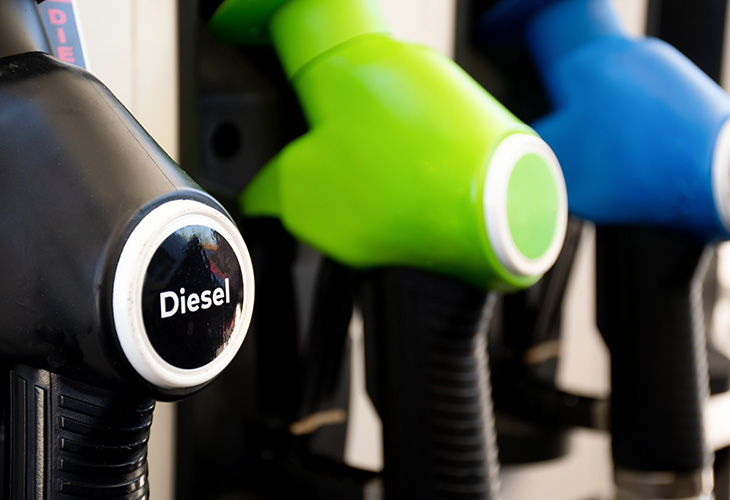Marije Onderwaater
Editorinvullen

Diesel pest sounds like something you'd better not have to deal with. And that's right: this problem causes considerable damage. Diesel pest can also occur in campers. Whether you're at risk and what you can do about it, you can read in this article.
Bacteria, molds, yeasts and other microorganisms can nestle in the fuel tank. The result is microbial contamination of the diesel fuel with the resounding name diesel plague. This contamination occurs, for example, in boats. But diesel plague can also be a danger to campers.
Today’s diesel is more susceptible to diesel plague than diesel from about ten years ago. This is due to the percentage of biodiesel in the fuel. Since 2009, the European Union has had mandatory targets for this, which stipulate that all diesel fuels sold within the EU must also contain 7% biodiesel. This mix of fossil diesel and biodiesel is called B7, named after the percentage. With this rule, the EU wants to reduce CO₂ emissions.
There is only one disadvantage: biodiesel is a mixture of vegetable or animal oils and that is exactly the mix that bacteria and their friends thrive on. If they also come into contact with water in the fuel tank, which can easily be there due to condensation, they start to develop. All these micro-organisms can grow together and form a slimy substance. This substance can end up in pipes and filters, block them and eventually lead to fuel problems or even a defective engine.
Passenger cars are generally not stationary for long periods of time. The micro-organisms need time to develop in a diesel tank, and they usually do not get that time in a passenger car. This is different for campers, which are sometimes stored for an entire season in winter. If a camper is stationary for a long period of time, the micro-organisms have plenty of time to grow. Especially when the tank is half full and a layer of condensation forms on the surface of the diesel. This very boundary is an excellent breeding ground for bacteria, fungi, yeasts and their friends. Together they can form that slimy mass and cause fuel and engine problems. Diesel plague in campers is therefore mainly a danger when campers are stationary for a long time and the tank is not completely filled.
Is your camper standing still for long periods of time and do you not want to run the risk of diesel plague? Then take these tips to heart:
Add additives: there are additives to prevent the development of micro-organisms in the tank. Please note that these are of no use to you once the diesel plague has struck. So make sure you add this before your camper is standing still for a long time.
Ensure fresh diesel: diesel that has been standing still in the tank for a long time is particularly susceptible to diesel plague. You can prevent this by regularly changing the diesel. Keep to a maximum of six months. Extra tip: fill up with synthetic diesel, such as HVO/HVO100 or XTL, which is not susceptible to bacterial growth.
Prevent condensation: the water in the fuel tank ensures that micro-organisms can thrive. If you want to prevent this, make sure you fill the tank completely so that there is actually no room for condensation.
Are you still the victim of diesel plague? Then it is best to visit the garage. The fuel tank needs a thorough cleaning, for which the contaminated diesel must first be removed. In theory you can do this yourself, but to be sure that the cleaning is done properly and safely, it is best to go to a professional company.
A microbial contamination of the diesel fuel in the fuel tank, caused by bacteria, fungi, yeasts and other micro-organisms.
Diesel pest occurs when micro-organisms in the fuel come into contact with water, for example through condensation. Together they form a slimy substance that can end up in pipes and filters. This causes them to clog, which can eventually lead to fuel problems or a defective engine.
Only campers that have been standing still for a long time. Micro-organisms need time to develop in a diesel tank. This can especially happen when a tank is half full and a condensation layer forms on the surface of the diesel that can serve as a breeding ground for diesel pest.
Add additives to prevent the development of micro-organisms, change the diesel in time and keep to a maximum of six months, and prevent condensation by filling the tank completely.
Then go to the garage for a thorough cleaning of the fuel tank.
Spotted an error? Email us. We appreciate it!